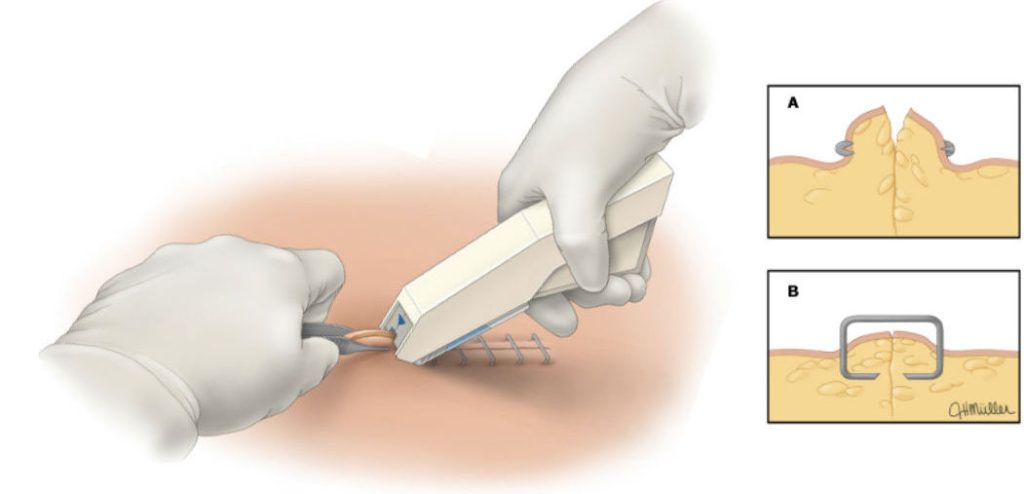
Staples, in a medical context, refer to surgical staples used in wound closure during various surgical procedures. They are metallic or absorbable materials shaped like staples, designed to hold tissue together securely until the wound heals.
Staples in medical procedures are devices used to close surgical incisions or wounds effectively. They provide mechanical support to the tissue edges, promoting wound healing and reducing the risk of infection or dehiscence (wound reopening).
During the stapling procedure:
© 2021-2025 Wyandotte Urgent Care Clinic. All Rights Reserved. Made With Love by Ignite Marketing Agency.